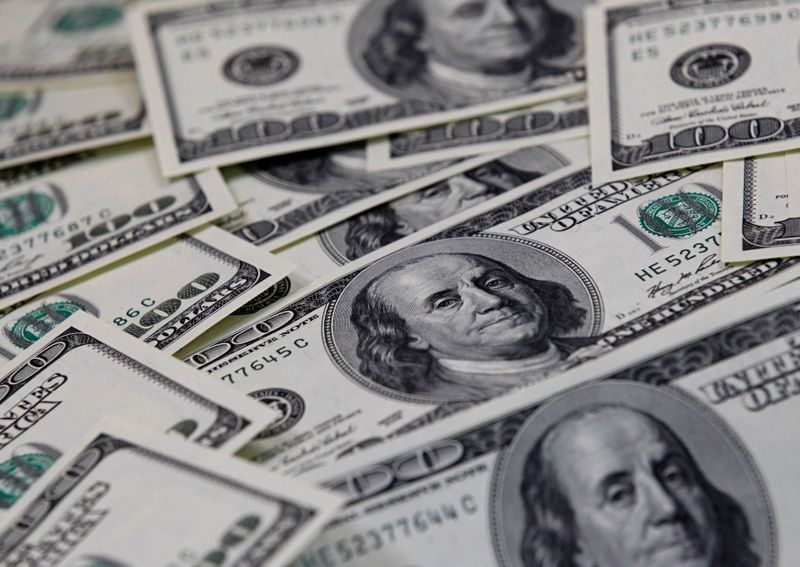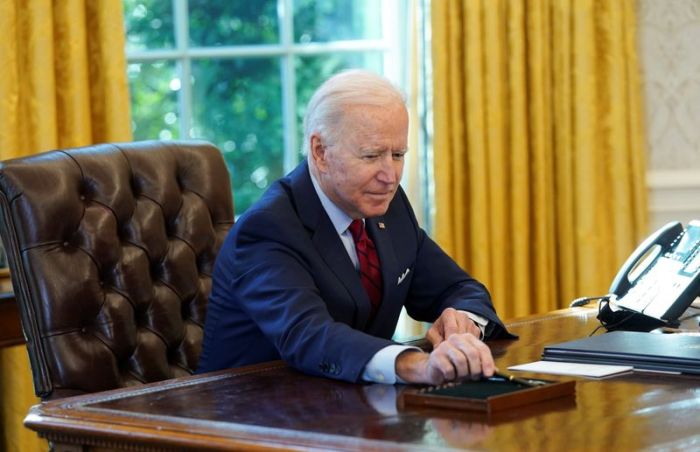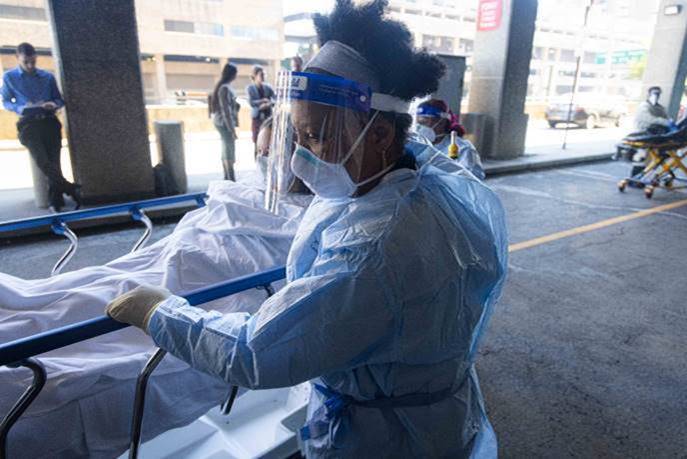NEW YORK (Reuters) – The safe-haven U.S. dollar fell on Thursday as risk sentiment improved after data showed that U.S. jobless claims fell in the latest week, while dire gross domestic product figures met expectations.
The U.S. economy contracted at its sharpest pace since World War Two in 2020 as COVID-19 ravaged services businesses like restaurants and airlines, throwing millions of Americans out of work and into poverty.
The Labor Department said separately that initial claims for state unemployment benefits totaled a seasonally adjusted 847,000 for the week ended Jan. 23. That was down 67,000 from the prior week, but claims remain well above their 665,000 peak during the 2007-09 Great Recession.
“Incoming U.S. data was supportive of risk-taking levels, with Q4 GDP rising close to expectations, and jobless claims falling more than expected,” said Ronald Simpson, managing director, global currency analysis at Action Economics.
U.S. stocks also rebounded on Thursday from sharp losses in the prior session as earnings season got off to a strong start and fears eased around hedge funds selling long positions to cover shorts.
The dollar index fell 0.26% on the day to 90.429. It earlier rose to 90.859, while riskier currencies including the Australian dollar dropped to one-month lows.
The greenback was boosted by safety buying earlier this week on concerns that U.S. fiscal stimulus will not be as large as originally hoped, and due to the continuing spread of COVID-19 as countries struggle to roll out vaccines.
The U.S. currency has also rebounded from three-year lows reached earlier this month on the view that last year’s decline ran too far too fast.
“There’s such a tug of war right now between the longer-term momentum…and the shorter-term term phenomenon of maybe a dollar short squeeze,” said Erik Nelson, a macro strategist at Wells Fargo in New York.
The dollar index is up 0.50% this month after falling 6.75% last year.
The Australian dollar gained 0.42% to $0.7695, after earlier falling to $0.7590, the lowest since Dec. 29.
The greenback fell 0.97% against the Norwegian crown to 8.578, after earlier rising to a one-month high of 8.7286
This week investors also have been rebalancing portfolios for month-end, which has boosted demand for the U.S. currency.
“Of late it’s really been a position rebalance story,” said Bipan Rai, North American head of FX strategy at CIBC Capital in Toronto. “The market’s still pretty short dollars.”
The euro has also been dented as European Central Bank (ECB) policymakers step up their mentions of the euro, with the most recent comments indicating that the ECB could cut its deposit rate to check the strength of the continent’s shared currency.
“We’re starting to hear more rhetoric from the ECB that leads me to believe that they’re going to be a little bit more active with respect to euro appreciation,” said Rai.
The euro gained 0.19% to $1.2136, after earlier falling to $1.2079.
Bitcoin rose 8.21% to $32,915, after briefly dipping below $30,000 on Wednesday.
(Reporting by Karen Brettell; Editing by Andrea Ricci)























